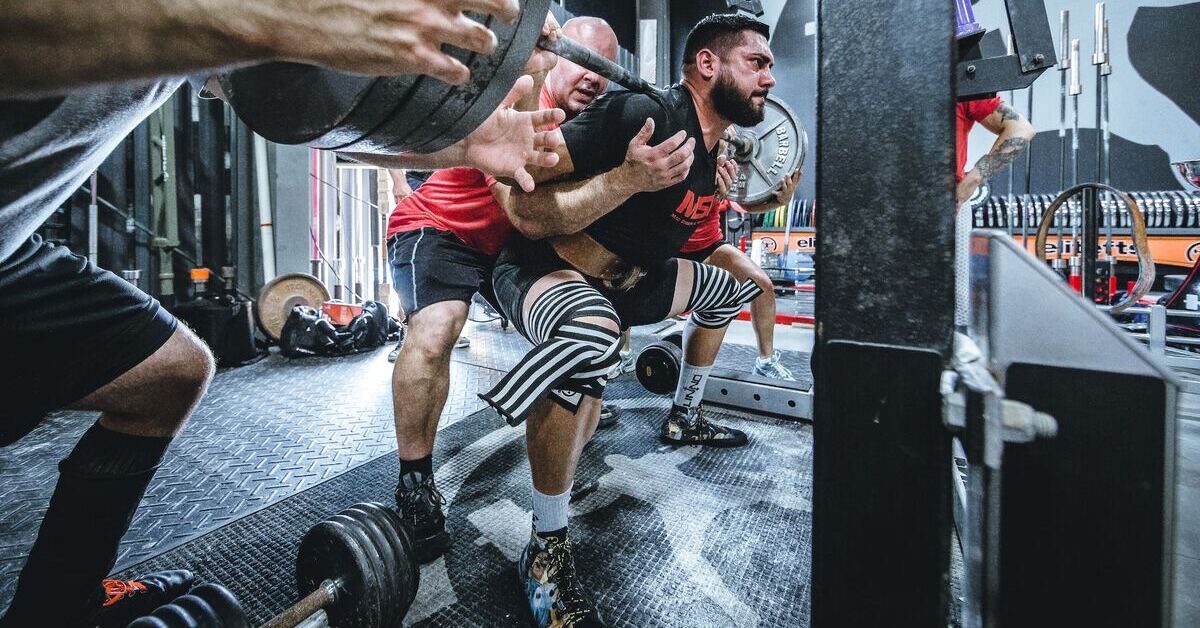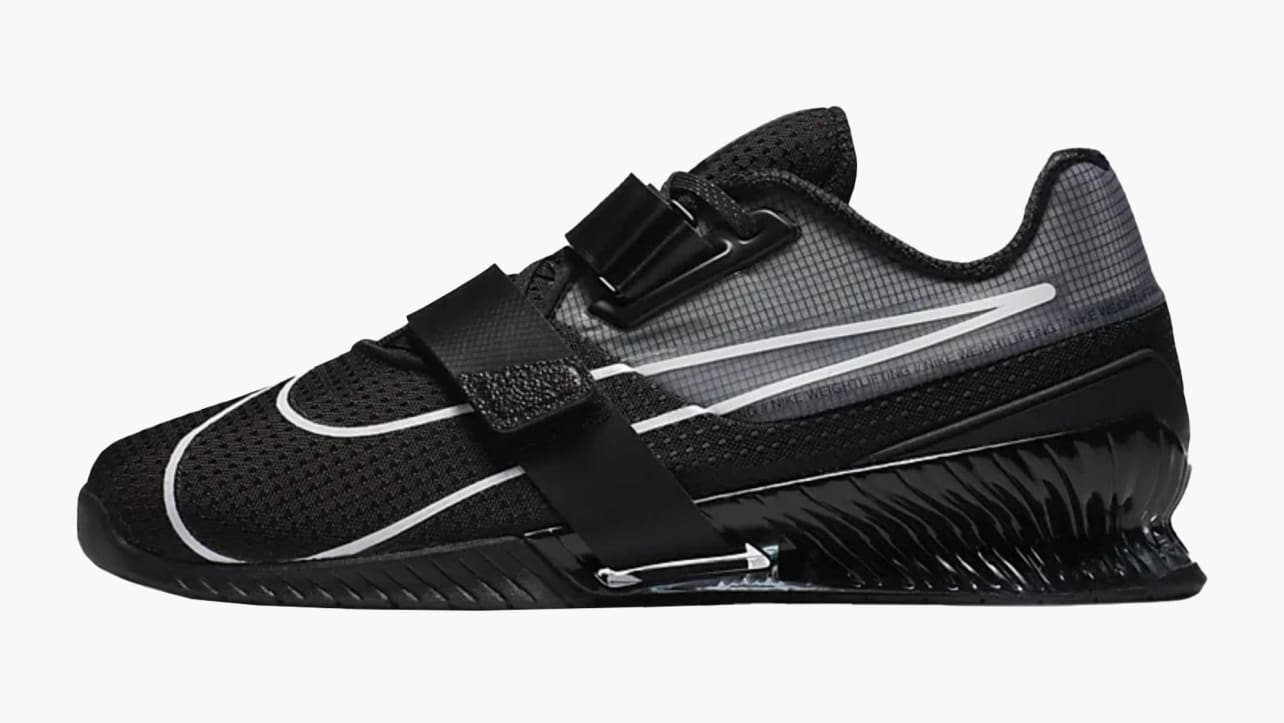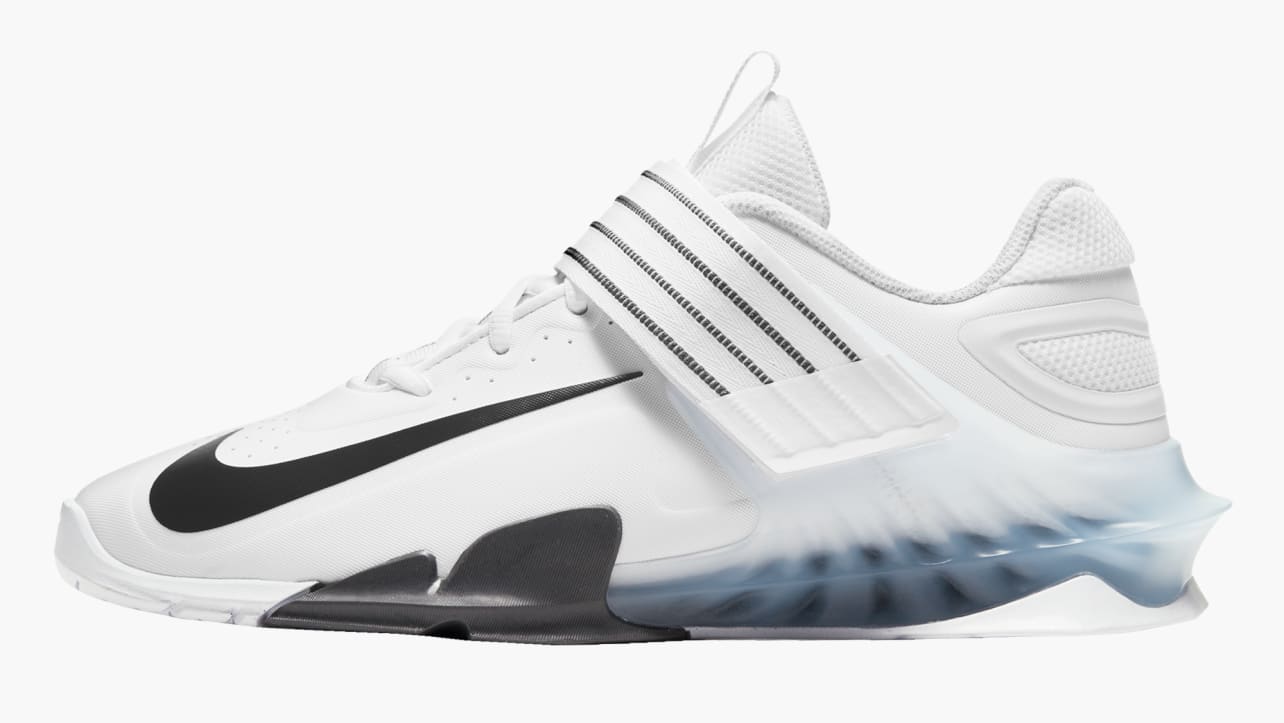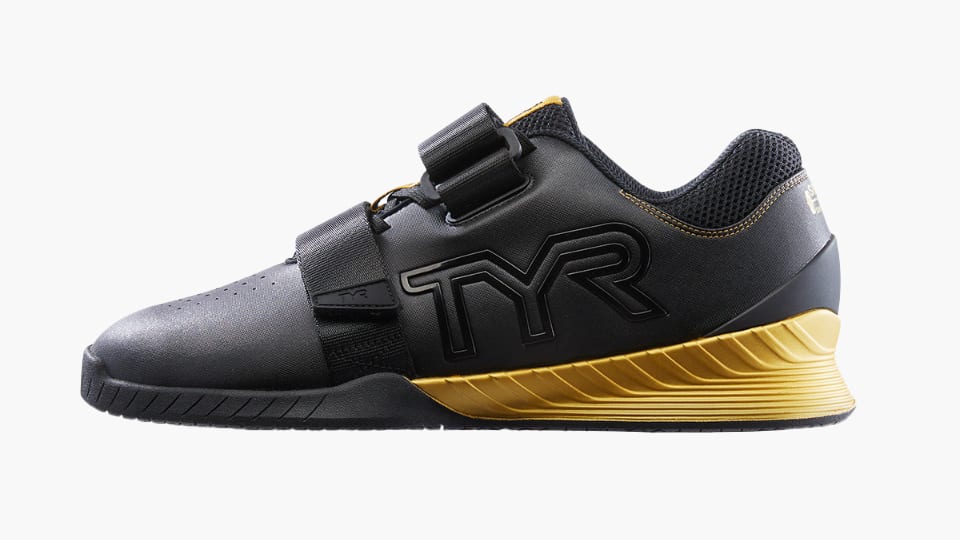If you’ve been to a commercial gym, you’ve likely seen members lifting weights in running shoes. Many of them probably don’t understand the importance of lifting weights in proper footwear.
The shoes you lift weights in affect your performance, especially when squatting. Weightlifting shoes, also known as squat shoes, are designed to enhance your squat performance. If you squat in running shoes, you’ve probably been missing out on PRs and are on the verge of being injured.
The purpose of this article is to explain the drawbacks of squatting in running shoes and the importance of squatting in lifting shoes. We’ll be explaining what running shoes are, the differences between running shoes and squat shoes, the drawbacks of squatting in running shoes, and the benefits of squatting in weightlifting shoes. We’ll also be reviewing squat shoes and answering some frequently asked questions.
What Are Running Shoes?
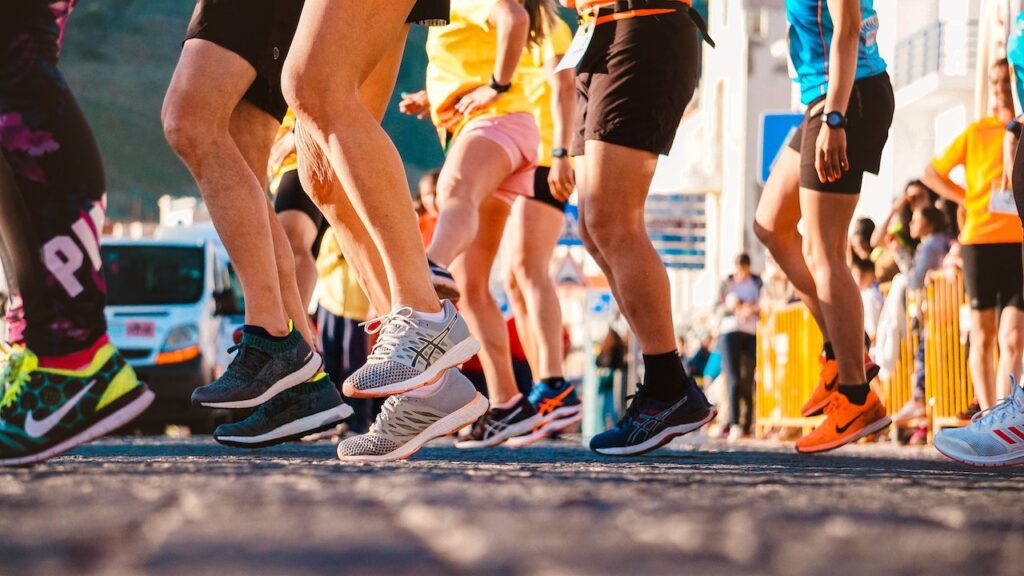
To understand why running shoes aren’t suitable for lifting weights, we need to examine their characteristics. Running shoes are designed to improve running mechanics and keep runners’ feet and joints safe. They have compressible heels and varying stack and heel heights.
Running shoes have enough cushioning to provide shock absorption and comfort to runners. Running in other types of shoes, such as strength training, basketball, or wrestling shoes, isn’t recommended because they’ll hinder your performance and increase your risk of injury.
Too much cushioning can negatively affect force production and cause instability during other athletic activities. For instance, many strength training exercises require a solid, stable base for producing force, which isn’t provided by running shoes.
Differences Between Running Shoes and Squat Shoes
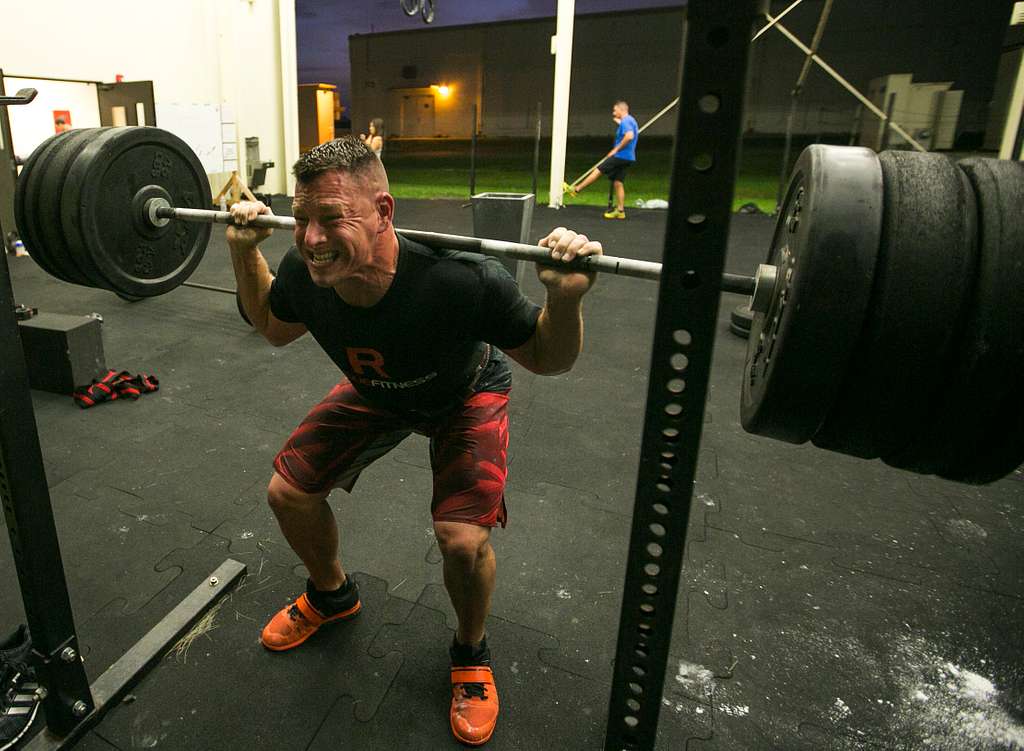
Running shoes and squat shoes are designed for different purposes, which is why they don’t share the same characteristics. In this section, we’ll explain several key differences between running and squat shoes.
Midsoles
A shoe’s midsole is the cushioning between its insole, the part of the shoe that touches the bottom of the foot, and outsole, the part of the shoe that touches the ground. Midsoles are typically made of ethylene-vinyl acetate (EVA), polyurethane (PU), thermoplastic polyurethane (TPU), or polyether block amide (PEBA). Many of a shoe’s characteristics, such as its stack height, cushioning, durability, stability, and comfort, are determined by its midsole.
The midsoles of running shoes are compressible because they’re designed to absorb the forces created when a runner’s feet strike the ground. Over time, running in non-compressible soles will lead to injury, which is why it wouldn’t be appropriate to run in weightlifting shoes.
The midsoles of weightlifting shoes are made of sturdy, non-compressible material. Non-compressible soles provide a strong, stable base for lifting weights, enhancing stability and allowing you to efficiently produce force.
Stack Height
“Stack height” is the amount of cushioning between your feet and the ground. The more cushioning a shoe has, the higher its stack height, and the less cushioning a shoe has, the lower its stack height. The classifications for stack height are barefoot, minimal, low, high, and maximal.
Running shoes can come in any stack height, but most runners prefer shoes with a medium stack height. A medium stack height provides enough cushioning to make running comfortable but not enough to negatively affect running mechanics.
Weightlifting shoes have a minimal stack height because thinner soles allow your feet to make a better connection with the ground. Being grounded is necessary for maintaining stability when lifting weights.
Heel-to-Toe Drop
A shoe’s “heel-to-toe drop” is the difference in height between its heel and toe. Heel-to-toe drop is important for running and lifting weights, and it affects both activities differently.
When running, there are 3 types of foot strikes – heel, toe, and midfoot. Running shoes with a high heel-to-toe drop are designed for runners that heel strike, while running shoes with a low heel-to-toe drop are designed for runners that toe or midfoot strike. It’s important for runners to choose a shoe that accommodates their striking style because the wrong shoe can negatively affect their stride.
Weightlifting shoes typically have a heel height that ranges between 0.5” and 1”, with the most common heel height being 0.75”. The heels of weightlifting shoes are meant to reduce the amount of ankle mobility necessary to achieve proper squat depth. Weightlifting shoes are a necessity for lifters with poor ankle mobility.
Arch Support
Most running shoes provide arch support to prevent “overpronation”, which is when a runner’s stride causes their feet to flatten more than they should. Overpronation can negatively affect running mechanics and lead to injury, so it’s important for runners to choose a shoe that will support their arches. A person’s feet can be classified as having one of three types of arches – low (flat feet), medium, or high. To have adequate arch support, a runner must choose a shoe designed for their type of foot arch.
Arch support isn’t as crucial to lifting weights as it is to running, which is why weightlifting shoes have little to no arch support. At best, you’ll find weightlifting shoes with minimal arch support, which can be helpful for lifters with flat feet.
Traction
The bottom, or outsole, of a shoe provides traction. It’s important to wear shoes that provide sufficient traction to prevent slipping. Different activities require different amounts of traction. For example, walking requires less traction than mountain climbing.
While running shoes provide traction, they aren’t designed to keep solid contact with the ground for extended periods of time. The traction they provide is meant to prevent your feet from slipping when striking the ground.
Weightlifting shoes are meant to provide enough traction for a lifter to transfer maximal force from their feet to the ground without slipping. Most weightlifting shoes will have an outsole made of anti-slip material to provide good traction.
Why You Shouldn’t Squat in Running Shoes
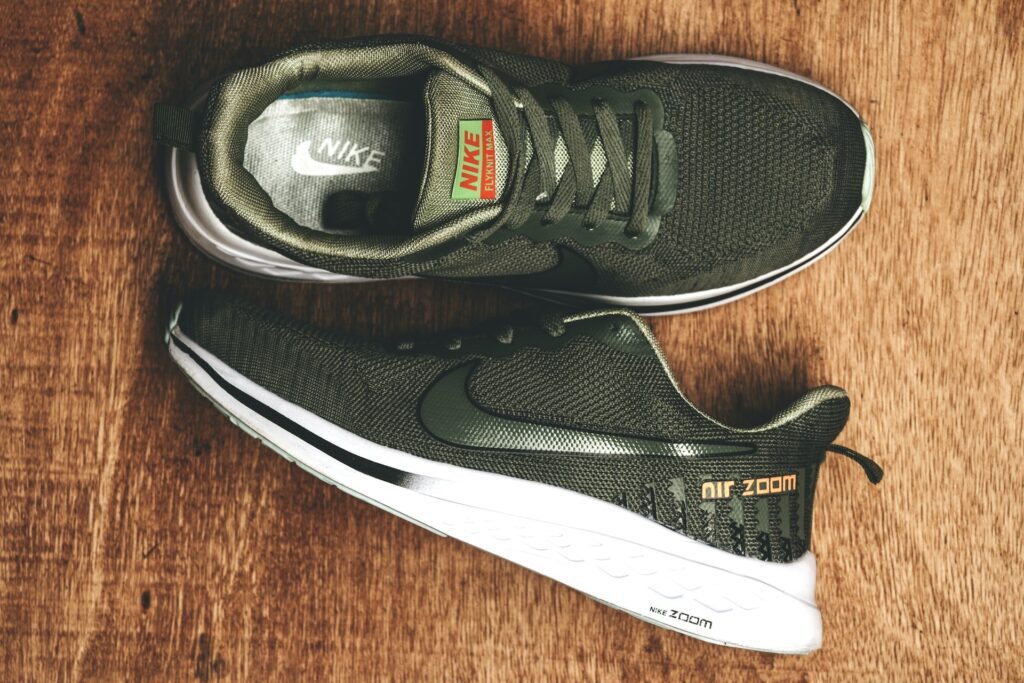
If you go to any commercial gym, you’ll likely see gym members lifting in running shoes. Lifting in running shoes isn’t ideal for many reasons. In this section, we’ll explain why you shouldn’t squat in running shoes.
Lack of Stabilization
As mentioned earlier, running shoes have compressible midsoles. Compressible midsoles provide shock absorption, which reduces the shock impact on your joints when running.
The saying “you can’t fire a canon from a canoe” can be likened to squatting in shoes with compressible soles. Running shoes aren’t ideal for squatting because their compressible soles cause instability, which negatively affects squat mechanics. When squatting, you want the soles of your shoes to be as solid as possible. This way, you’re able to maintain your balance during the eccentric portion of the squat and effectively push against the floor during the concentric portion of the squat.
Feet Sink Into Soles
When you squat in shoes with compressible soles, your feet sink into them, which negatively affects your balance and ability to produce force. Balance and force production is important for squatting, making squatting in running shoes suboptimal.
The thick compressible soles of running shoes make it difficult to “feel the floor”, which can affect a lifter’s squat mechanics. This can cause some lifters to lose tension in the “hole”, or bottom of the squat.
No Elevated Heel
The heels of squat shoes reduce the amount of ankle mobility necessary to reach proper squat depth. Squat shoes are a necessity for lifters with poor ankle mobility. Running shoes are flat, which isn’t inherently bad, but it can be problematic if you lack the ankle mobility to perform a full-depth squat in flat shoes.
The lack of an elevated heel will also make your squat more hip dominant because your hips will be further back. If your goal is to engage your quads as much as possible when squatting, you shouldn’t wear flat shoes.
The Benefits of Squatting in Squat Shoes
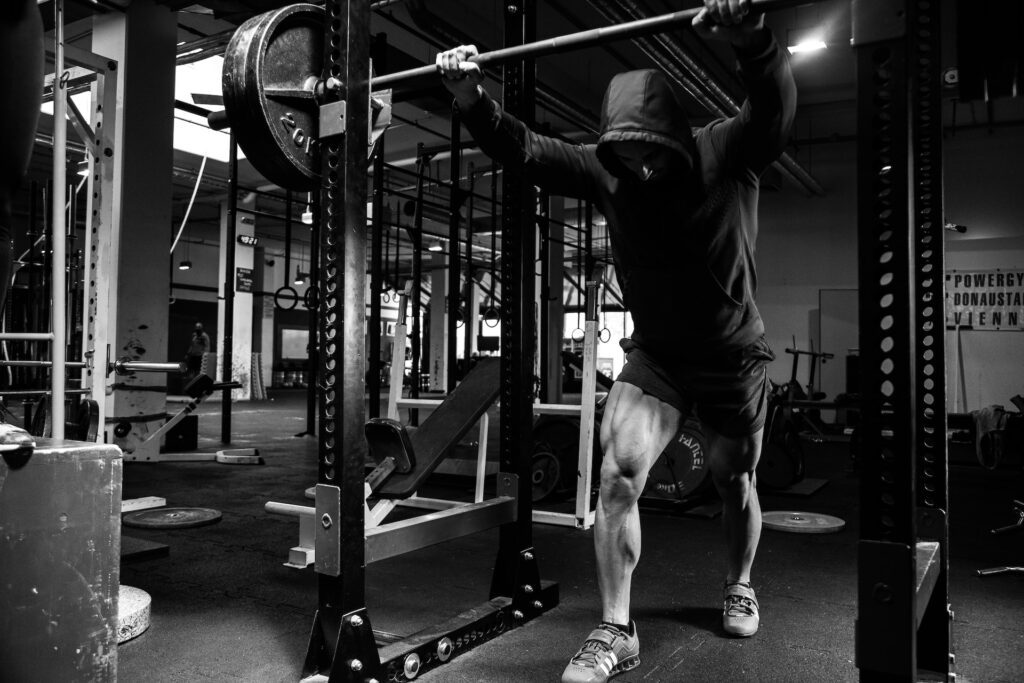
Now that we’ve explained the drawbacks of squatting in running shoes, let’s explain the benefits of squatting in squat shoes.
Increased Stability
Squat shoes are designed to enhance stability for squatting, which is why they have non-compressible soles. Non-compressible soles give you a good base to push off of. As stated earlier, the soles of running shoes aren’t ideal for squatting because they’re compressible and allow your feet to sink into them.
Squat shoes have a low stack height, providing minimal cushioning between your feet and the floor. Squatting in shoes with minimal cushioning allows you to maintain your stability, which is necessary for proper squat technique. Typically, the soles of running shoes have a medium stack height, making them unsuitable for squatting.
The enhanced stability provided by squat shoes will allow you to maintain your balance and produce sufficient force when squatting.
Easier to Reach Proper Squat Depth
The elevated heels of squat shoes make it easier to achieve full squat depth. When lifters have trouble squatting to depth, it’s usually due to their ankle mobility. The heels of squat shoes reduce the ankle mobility demands of the squat, making it easier to achieve full depth.
If you’re used to squatting in running or flat shoes and have trouble achieving full depth, consider investing in a pair of squat shoes. When using squat shoes, you should notice a significant improvement in the way your squats feel.
Squatting in Flat Lifting Shoes
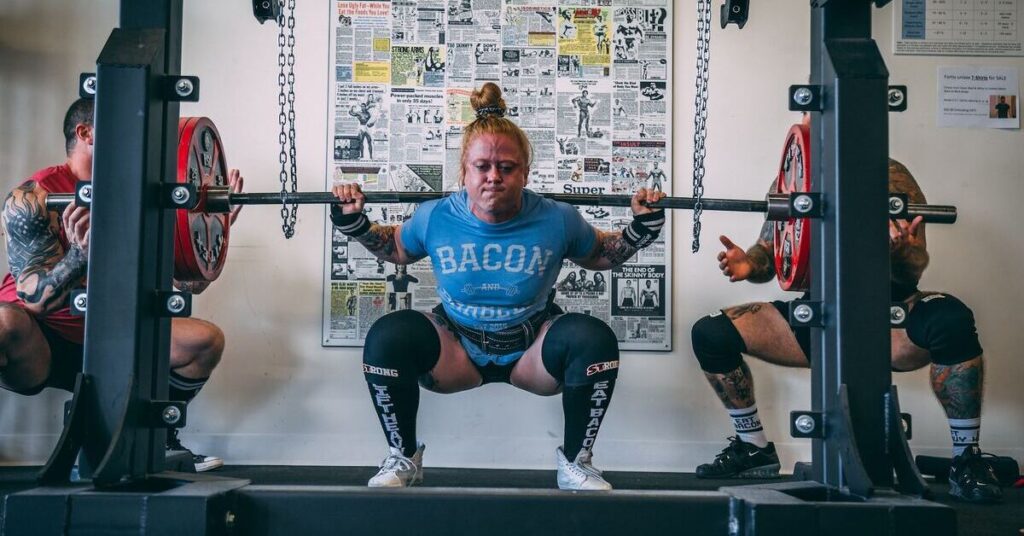
If you have good ankle mobility and prefer to use a hip-dominant squatting style, you should consider squatting in flat lifting shoes. Flat lifting shoes feature non-compressible soles, a low stack height, good traction, and good durability, making them ideal for lifting weights.
Squatting in flat lifting shoes can save you money. Flat lifting shoes are typically better than weightlifting shoes for deadlifting. If you squat in weightlifting shoes and deadlift in flat shoes, you’ll need two pairs of shoes. If you squat and deadlift in flat shoes, you’ll only need one pair of shoes.
Some examples of flat lifting shoes are NOBULL Trainers, Sabo Deadlifting Shoes, and Converse Chuck Taylor All Stars.
Recommended Shoes For Squats
Now that you know what type of shoes are ideal for squatting, we’ll give you some shoe recommendations. Below, you’ll find five of the best shoes for squats.
Nike Romaleos 4
The Nike Romaleos 4 is a popular shoe in the weightlifting community. It has stiff, non-compressible soles and heels with flared edges that provide stability. The shoe’s outsoles provide excellent traction, making it perfect for squatting and Olympic weightlifting. The Romaleos 4 has two straps that secure your feet. This shoe looks great and is available in different color options.
For some lifters, the Romaleos 4’s toe box might be too narrow, making it uncomfortable to squat in. (Note: The Romaleos 4’s toe box is wider than previous Romaelos’ toe boxes.) Because this shoe runs narrow, consider buying it a half-size up. Also, the Romaleos 4 is more expensive than many other shoes.
Nike Savaleos
The Nike Savaleos is a high-quality weightlifting shoe that’s less expensive than many other weightlifting shoes, making it a good option for beginners. The Savaleos have a wide base and are lightweight, which is great for lifting. Their wide strap and tongue provide a snug, secure fit. The Savs have a shorter heel-to-toe drop than the Romaleos, which might be better for lifters who’ve never trained in weightlifting shoes.
The Savaleos run a little too snug for some, so similar to the Romaleos, ordering a half-size up might help. Its three available color options are fine but limited.
TYR L-1 Lifter
The TYR L-1 Lifter is an excellently designed shoe. It has an anatomical design and a wider-than-average toe box built for normal and wide feet. The L-1’s 21mm heel-to-toe-drop, supportive crash pad, and heel clip provide stability when squatting. Its breathable, easy-to-lace-up, dual adjustable straps allow for customized tightness.
The TYR L-1’s heel has slightly more “give” than other weightlifting shoes, which may not suit some lifters. While the L-1’s toebox is wide, it’s not as wide as some say. If you decide to buy it, you might have to go a half size up. Because the L-1 is so popular, it’s often sold out, so you might have trouble finding it.
Reebok Legacy Lifter 3
If you’re looking for weightlifting shoes with a high heel height, the Reebok Legacy Lifter 3 is a good option. Its heel is 22mm, which is taller than most weightlifting shoes. Because of its heel height, the Lifter 3 is a good option for tall athletes. This shoe is very stable and features Reebok’s famous “Pump” technology.
Although the Reebok Legacy Lifter 3 includes Pump technology, it doesn’t make a difference in the shoe’s fit. This shoe is somewhat heavy, which may turn off some lifters. The Lifter 3 is more expensive than many other weightlifting shoes, costing slightly more than the Romaleos 4.
Converse Chuck Taylor All Star
The Converse Chuck Taylor All Star is comfortable and has a retro look. It’s easy to clean, breathable, and can be found in most shoe stores. The shoe’s flat, non-compressible soles are good for stability, and its low stack height allows the wearer to be very close to the ground, which is ideal for lifting weights. This shoe is available as a high or low top. If you’re looking for a flat, inexpensive shoe for squatting, the Chuck Taylor All Star is a good option.
While you can lift weights in Converse Chuck Taylor All Stars, they’re not designed for it. They don’t provide ankle support and aren’t as durable as actual lifting shoes.
Frequently Asked Questions

Is It Bad to Squat in Running Shoes?
You shouldn’t squat in running shoes. Running shoes are designed to provide comfort and shock absorption for running. They have compressible soles, which isn’t ideal because compressible soles cause instability when squatting and negatively affect squat mechanics.
What Shoes Should I Squat In?
We recommend squatting in weightlifting shoes or flat lifting shoes. Both have characteristics that make them suitable for squatting, such as non-compressible soles, good traction, and good durability.
Should I Squat in Flat Shoes?
Whether or not you should squat in flat shoes depends on your squatting style and ankle mobility. If you have a hip-dominant squatting style and the ankle mobility to reach full squat depth, squatting in flat shoes might be better for you. If you have a quad-dominant squatting style or poor ankle mobility, squatting in heeled shoes might be better for you.
Should I Squat Barefoot?
If you have the ankle mobility to squat in flat lifting shoes, you should be able to squat barefoot. Just know that squatting barefoot poses a higher risk of injury than squatting in shoes. Lifting shoes provide traction to prevent slipping and protect your feet should a weight or other object fall on them (although the protection is minimal, some protection is better than no protection). Also, squatting barefoot can be unsanitary, especially if you’re squatting in a gym used by multiple people. Because of the drawbacks of squatting barefoot, we recommend squatting in shoes.
The Bottom Line: Squatting in Running Shoes
When lifting weights, it’s important to use the proper equipment, including the proper shoes. Running shoes are good for running, but they aren’t good for squatting.
There are many reasons that squatting in running shoes isn’t ideal, such as being exposed to a greater risk of injury and not being able to achieve proper squat mechanics.
You can enhance your performance, improve your technique, and ensure a safer lifting experience by choosing the proper footwear. Ditch your running shoes and invest in the proper type of shoes to achieve your lifting goals.
Jay is not just a writer; he’s a seasoned strength enthusiast with two decades of dedicated training under his belt. Whether he’s crafting engaging articles, reviewing cutting-edge equipment, or sharing his personal fitness anecdotes, Jay’s writing resonates with a diverse audience, from seasoned gym enthusiasts to beginners eager to embark on their own transformative fitness paths.
